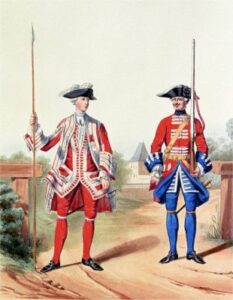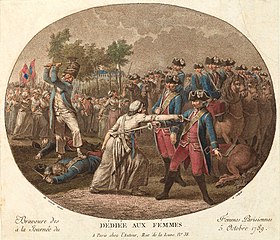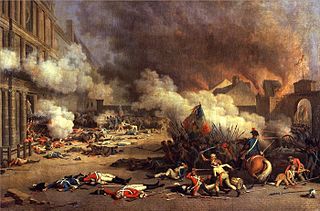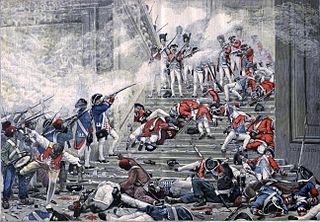
I’m just back from a cruise on the Rhine River. The route started in Amsterdam. We passed at or near Leiden and Cologne with its world famous cathedral before taking a short detour on the Moselle to visit Chochen and then returning to the Rhine to pass near Koblentz, Heidelberg, Strasbourg, and Lucerne. The weather was perfect and the journey relaxing. Just the thing to clear my head before starting the second book in the Salem Stories Series. Along the way, I learned new historical stories to share. The first of these is the story behind The Lion Monument in Lucerne, Switzerland, a sculpture Mark Twain called “the most mournful and moving piece of stone in the world.”
Today’s blog is about The Lion Monument’s background. Next time, I’ll write about the monument’s history.
SWISS GUARDS & THE FRENCH REVOLUTION

Swiss mercenaries were one of the earliest mercenary infantry forces. Founded in 16th century, Swiss mercenary units were often referred to as pikemen, though their units included halberdiers, bows and crossbows, and the early use of firearms that preceded the rapid advance of the attack column. Swiss units were known for attacks in huge columns with long pikes, their refusal to take prisoners, and their victorious record. Enlistees joined for adventure, lack of opportunity at home, and a love of fighting, or at least an adrenaline rush.

By 1740 more than 12,000 Swiss soldiers served in the French army. When the French Revolution broke out in May 1789, Swiss units were a substantial part of the royal troops Louis XVI summoned to his defense. In October, Parisian market women marched to the palace at Versailles demanding reforms. The event forced the king to relocate to the Tuileries Palace in Paris, ostensibly for his protection. In June 1791 the king and his family attempted to escape to Austria. They were caught and returned to Paris. Events escalated.

During the night of August 8, 1792, members of the Swiss Guards realized the situation was dire and buried their regimental standards so they could not be taken or destroyed. These were later discovered by a gardener and ceremoniously burned by French Republican leaders on August 14th. Meanwhile, the Swiss Guards were summoned to their posts at the Tuileries Palace on August 9th.

On the 10th of August, revolutionaries stormed the Tuileries. The royal family escaped to the Legislative Assembly, but fighting continued. The king’s Swiss Guards fought back the crowd. Half an hour after the fighting started, Louis XVI wrote the commander a note ordering the Swiss Guard back to their barracks. The Swiss Guards did not comply until they ran low on ammunition and were overrun by superior numbers.
One account says that when the fighting was over, 760 Swiss Guards, including 26 officers, were either killed in the fighting or executed after surrendering. About 100 men managed to escape.
About 200 Guards died in prison from their wounds. In September, those who did not die in prison were tried before the Military Tribunal of the Legislative Assembly and hanged. The only exception was Major Karl Josef von Bachmann, the officer in charge at Tuileries, who was guillotined while wearing his red Guards uniform
A MYTH IS BORN
Karl Pfyffer von Altishofmen was an officer in the Swiss Guards who was away on leave in Lucerne at the time his comrades-in-arms died in battle. An uncle who sponsored Pfyffer’s position in the Guard was killed, and he probably suffered “survivors’ guilt.” While his brothers suffered and died, his life continued. Still grieving the loss, Phyffer wrote An account of the bearing of the regiment of Swiss Guards on August 10 1792 and published it in 1819 as part of his fund raising efforts to build a memorial to his fellow soldiers. Historian Alain-Jacque Pauchard notes Pfyffer’s book lacks objectivity. Pfyffer wrote a story about valiant soldiers in the Swiss Guard who were massacred by a band of revolutionaries. Recent historical investigations, however, estimate the number of Guards killed as closer to 300 than 760.
A written myth fades with time, but a sculpture encased in sandstone will stand the vagaries of historical interpretation. Creating the Lion Monument is the next blog topic.
💂♂️ 💂 💂
Illustrations
Soldier & Officer of Swiss Guards, 1757.
Bravoure des femmes parisiennes.
Storming of Tuileries. Jean Duplessis-Bertaux. 1793.
Swiss Guards on Grand Staircase during Storming of Tuileries. Henry-Paul Motte, 1792.
Kira Kofoed. “The Dying Lyon.” Thorvaldsen’s Museum Archives. 2013.
Olivier Pauchard. “The Lion of Lucerne: the controversial tourist attraction.” Swissinfo. Aug 7 2021

Sandra Wagner-Wright holds the doctoral degree in history and taught women’s and global history at the University of Hawai`i. Sandra travels for her research, most recently to Salem, Massachusetts, the setting of her new Salem Stories series. She also enjoys traveling for new experiences. Recent trips include Antarctica and a river cruise on the Rhine from Amsterdam to Basel.
Sandra particularly likes writing about strong women who make a difference. She lives in Hilo, Hawai`i with her family and writes a blog relating to history, travel, and the idiosyncrasies of life.

